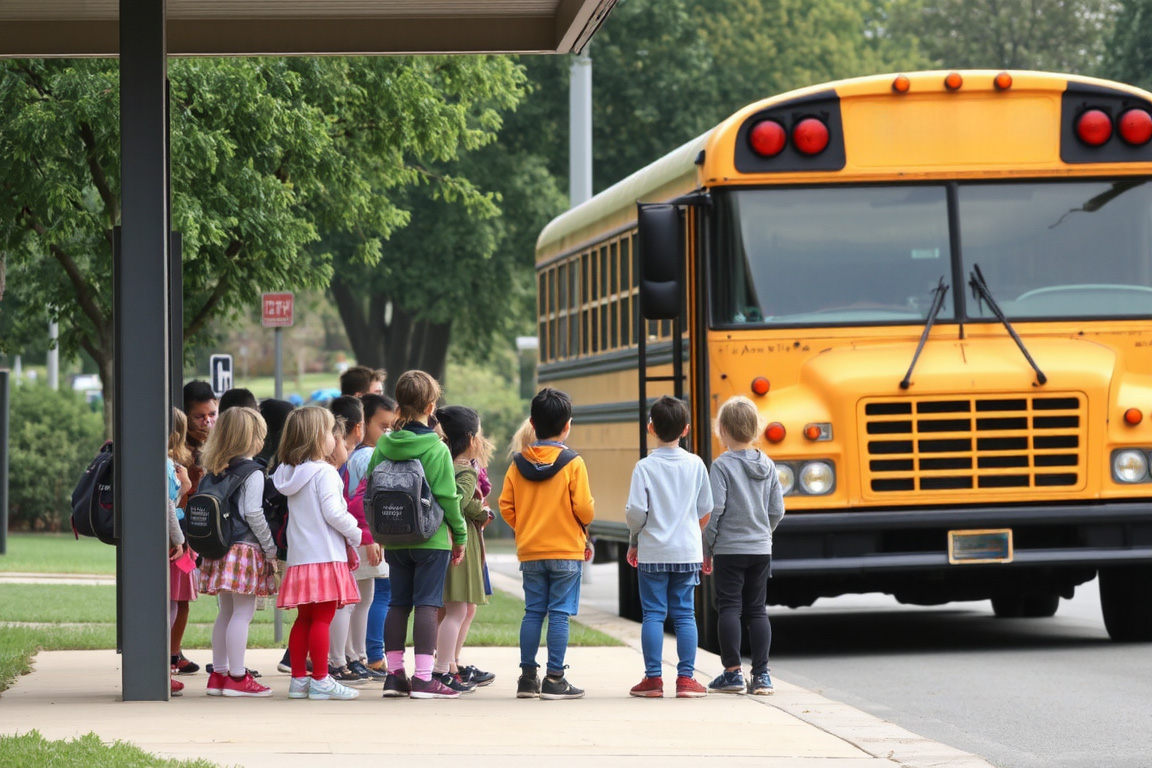Welcome to the final installment of our “Back-to-School Traffic Safety Series.” In our previous article, we explored carpooling safety and liability. Today, we’re focusing on a crucial aspect of school transportation: bus stop safety. Whether you’re a driver, parent, or student, understanding and following bus stop safety rules is essential for protecting our community’s children.
The Importance of Bus Stop Safety
School buses are one of the safest forms of transportation, but the areas around bus stops can be dangerous. According to the National Highway Traffic Safety Administration (NHTSA):
- More children are hit by cars near schools than at any other location.
- The most dangerous part of the school bus ride is getting on and off the bus.
In Tennessee, violating school bus safety laws can result in serious penalties, reflecting the critical nature of this issue.
Safety Tips for Drivers
1. Know the Law
Tennessee law requires drivers to stop for school buses that are loading or unloading children:
- On a two-lane roadway, all traffic in both directions must stop at least 30 feet away from the bus when the red lights are flashing and the stop sign arm is extended.
- On a multi-lane roadway with no physical barrier, drivers traveling in both directions must stop.
- On a divided highway with a physical barrier (such as a median or unpaved space at least five feet wide), only the traffic following the bus must stop.
Violating these laws can result in the following penalties:
- A fine of up to $500 for a first offense and up to $1,000 for subsequent offenses.
- Possible jail time, with up to 6 months for a first offense and up to 11 months and 29 days for subsequent offenses.
- Additional consequences may include community service, license suspension for at least one year, or reckless endangerment charges if the violation causes harm.
2. Recognize the Signs
Be alert for these indicators that a school bus is stopping:
- Flashing yellow lights mean the bus is preparing to stop.
- Flashing red lights and an extended stop sign arm mean the bus has stopped to load or unload children.
3. Maintain a Safe Distance
- Stay at least 30 feet away from a stopped school bus.
- Be prepared for children to suddenly appear near the bus.
4. Be Extra Vigilant in School Zones
- Always obey reduced speed limits in school zones.
- Watch for children who might dart into the street unexpectedly.
5. Avoid Distractions
- Put away your phone and avoid other distractions while driving, especially near bus stops and in school zones.
Safety Tips for Parents and Children
For Parents:
- Teach Bus Stop Safety
- Arrive at the bus stop at least 5 minutes early.
- Stand at least 10 feet (3 giant steps) away from the curb.
- Wait for the bus to come to a complete stop before approaching.
- Visibility is Key
- Dress children in bright colors or use reflective gear, especially during early morning hours or on cloudy days.
- Practice Safe Street Crossing
- Teach children to look left, right, and left again before crossing the street.
- Always use crosswalks and pedestrian signals where available.
- Supervise Young Children
- Accompany young children to the bus stop and wait with them until the bus arrives.
For Children:
- Stay Alert
- Don’t play with toys or use electronic devices while waiting for the bus.
- Pay attention to your surroundings.
- Board Safely
- Wait for the bus to come to a complete stop.
- Use the handrail when boarding.
- Never walk behind the bus.
- If You Drop Something
- Tell the bus driver and wait for instructions.
- Never try to pick up something that falls under or near the bus.
- Crossing the Street
- If you need to cross the street after exiting the bus, walk at least 10 feet in front of the bus.
- Make sure you can see the bus driver and the driver can see you.
- Wait for the driver’s signal before crossing.
The Role of School Bus Drivers
School bus drivers play a crucial role in ensuring children’s safety:
- They are trained to follow specific safety protocols.
- They use a system of lights and signs to communicate with other drivers.
- They are responsible for ensuring children board and exit the bus safely.
However, they rely on other drivers and pedestrians to follow the rules and remain alert.
Community Involvement in Bus Stop Safety
Creating safe bus stops is a community effort:
- Report Unsafe Conditions: If you notice hazardous conditions at a bus stop, report them to your local school district or transportation department.
- Volunteer: Some communities have “Bus Stop Parent” programs where adults volunteer to supervise bus stops.
- Advocate: Support local initiatives to improve bus stop safety, such as better lighting or sidewalk improvements.
Legal Implications of Bus Stop Accidents
If an accident occurs at or near a bus stop:
- Ensure everyone’s safety and call 911 if there are injuries.
- Document the scene and gather witness information.
- Report the incident to the school and bus company.
- Consider consulting with a personal injury attorney, especially if there are injuries.
Conclusion: A Shared Responsibility
Bus stop safety is a shared responsibility that requires the attention and cooperation of drivers, parents, children, and the entire community. By following these safety guidelines and remaining vigilant, we can help ensure that every child in Nashville arrives at school and returns home safely each day.
As we conclude our “Back-to-School Traffic Safety Series,” we hope you’ve found these articles informative and helpful. Remember, school traffic safety is an ongoing commitment that extends beyond the back-to-school season.
If you or your child has been involved in a bus stop-related accident or any school transportation incident, Stillman & Friedland Attorneys are here to help. Our experienced team can guide you through the legal process, ensuring you understand your rights and options. Call our Nashville team at 615-244-2111 for a free, confidential consultation. You can also reach out via our live chat or online contact form.
Let’s work together to make this school year the safest one yet, Nashville.
Because we care…
Stillman and Friedland







